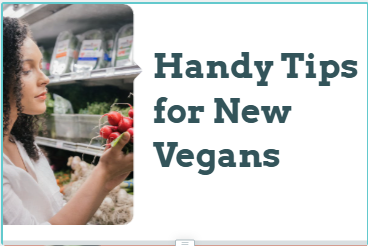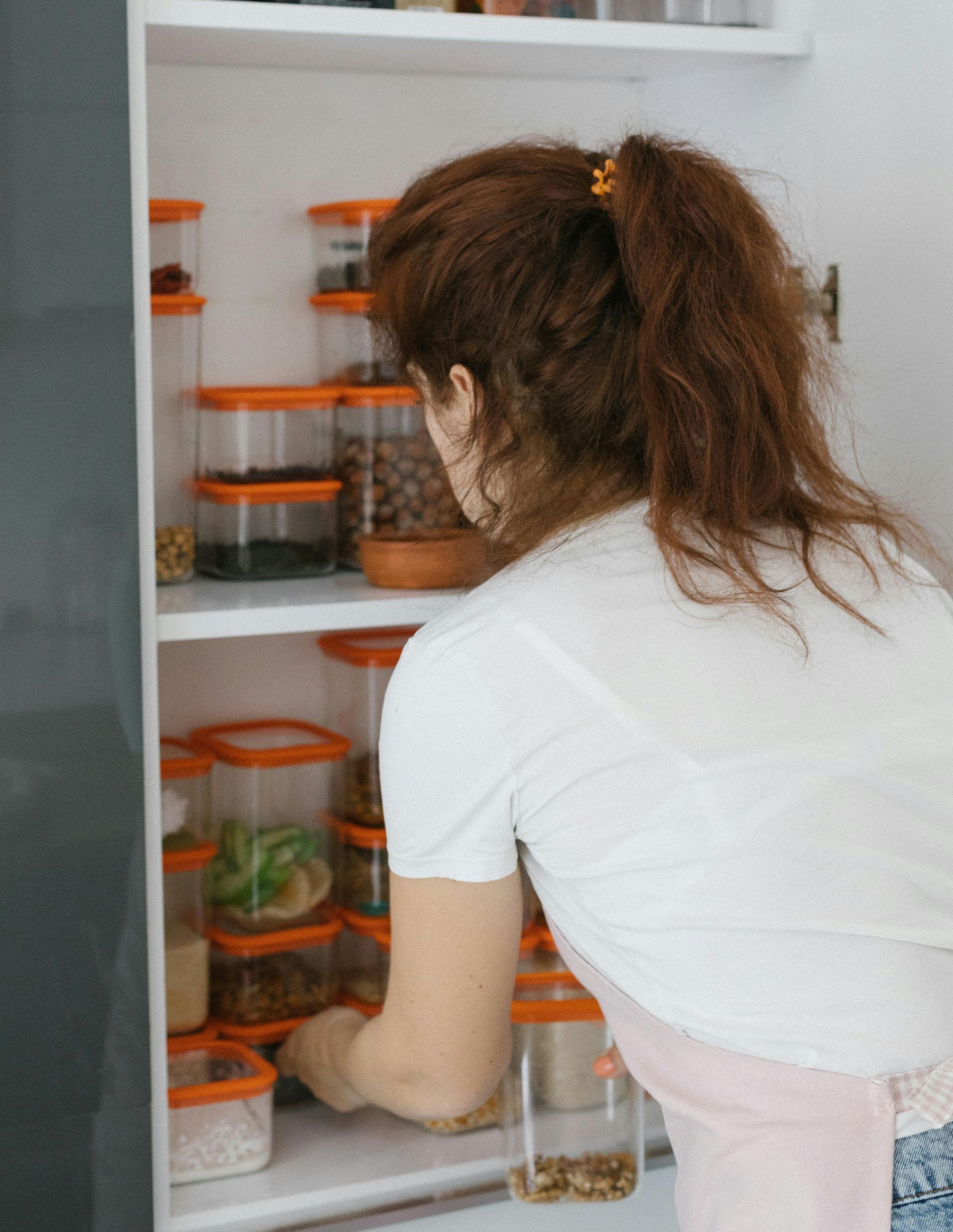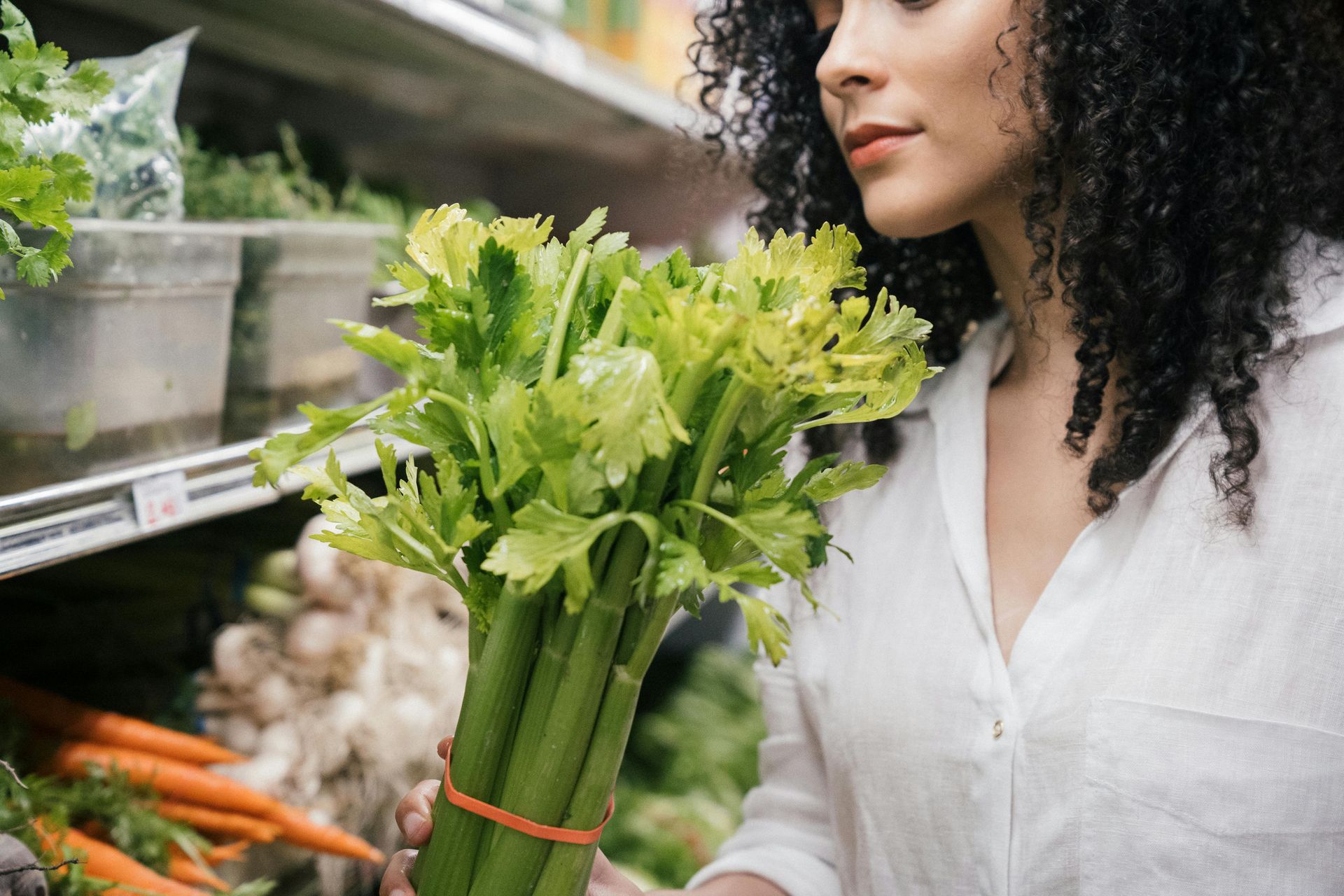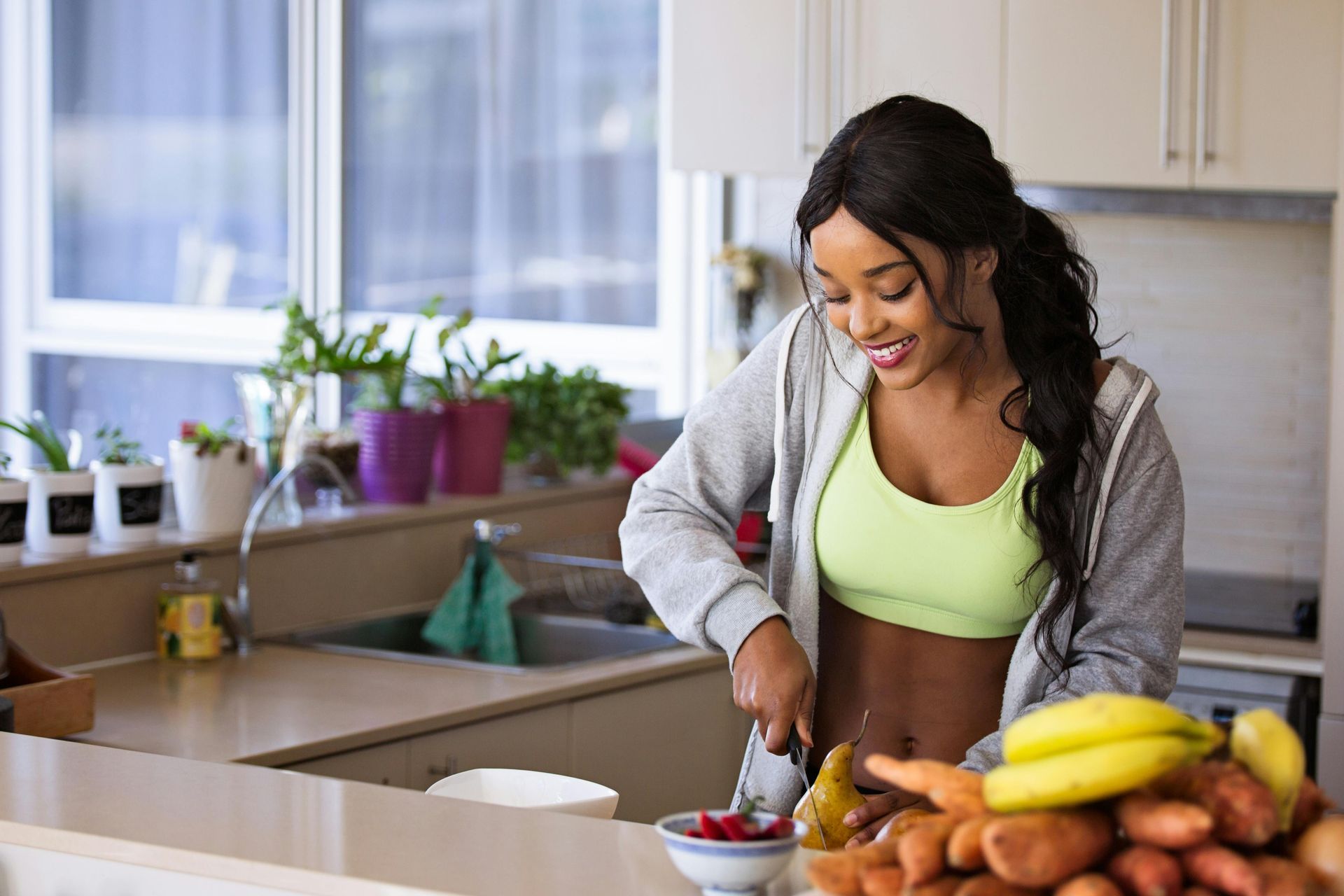How to Become a Vegan: A Beginner's Guide to Transitioning to Plant-Based Living
Transitioning to a vegan lifestyle is one of the most transformative changes you can make for your health, the environment, and animal welfare. But, starting a plant-based diet can feel overwhelming with all the questions swirling around like: What do vegans eat? How do I get enough protein? Will I miss my favorite foods? You may even wonder how to eat out as a vegan. It’s all perfectly reasonable for vegan newbies to have a mountain of questions.
If this is you, I've been exactly where you are now, but trust me, every step of this vegan journey is worth it. This is why I created this article to share practical vegan tips for beginners. Hopefully, this will make your transition smooth, enjoyable, and sustainable.
What Happens to Your Body When You Go Vegan?
When I first adopted a vegan diet, the changes were remarkable. Within weeks of eliminating animal products and embracing whole food plant-based nutrition, I noticed increased energy levels and better digestion. Many people experience similar vegan health benefits, including clearer skin, improved sleep quality, and enhanced mental clarity. I can also attest to the psychological benefits as you feel like you’re undertaking a purposeful mission; a journey to a new and better version of yourself. Of course, everyone is different but whatever passion made you decide to go down this path will be amplified as you embark on the new you.
The long-term benefits of plant-based eating are even more impressive. Research shows that well-planned vegan diets can reduce the risk of heart disease, type 2 diabetes, and certain cancers. But remember, simply going vegan doesn't automatically equal health. This is just one piece of the health puzzle. You have to stay the course and maintain a healthy lifestyle.
Step 1: What do Vegans Eat? Educate Yourself
Quick Answer: Vegans eat everything plants offer. Thin fruits, vegetables, grains, legumes, nuts, and seeds while avoiding all animal products including meat, dairy, eggs, and honey.
Here's a shocking discovery I made: vegans eat more variety than most omnivores. While my meat-eating friends rotate between chicken, beef, and pork, I explore dozens of plant proteins weekly. The secret isn't replacement, it's expansion.
The 80/20 Rule for Vegan Eating Success
80% Whole Foods, 20% Fun Foods
This approach has served me well. Focus most of your meals on:
- Legume powerhouses: Black beans, chickpeas, lentils (15+ grams protein per cup)
- Ancient grains: Quinoa, farro, wild rice (complete nutrition profiles)
- Colorful vegetables: Aim for 5 different colors daily
- Healthy fats: Avocados, nuts, olive oil (brain food essentials)
The remaining 20% can include plant-based treats, processed vegan foods, and comfort meals. This balance keeps you satisfied without sacrificing your health.
My "Stealth Vegan" Strategy
Here's what nobody tells beginners: start with foods that are already vegan. Your morning oatmeal? Vegan. That pasta marinara? Already plant-based. These "accidentally vegan" meals eliminate the overwhelm of complete cold turkey.
Instantly Vegan Favorites:
- Spaghetti with marinara and vegetables
- Bean and rice bowls with salsa
- Vegetable stir-fries with soy sauce
- Smoothies with plant-based milk and fruit
- Toast with avocado and tomatoes
The Mobile-First Meal Formula
For busy lifestyles, I use the "5-Minute Rule": every vegan meal needs five ingredients or less, five minutes prep maximum, or five days batch-cooking potential.
Quick Examples:
- 5 ingredients: Rice + beans + salsa + avocado + lime
- 5 minutes: Smoothie with banana + spinach + plant-based milk + protein powder + berries
- 5 days: Sunday batch of lentil curry for week-long lunches
Starting your plant-based journey doesn't require complicated recipes or expensive specialty items. Focus on building satisfying meals around these nutrient-dense foundations:
Examples of Essential Plant-Based Proteins:
- Legumes: black beans, chickpeas, lentils, and split peas
- Soy products: tofu, tempeh, and edamame
- Whole grains: quinoa, brown rice, and oats
- Nuts and seeds: almonds, hemp seeds, and chia seeds
Colorful Fruits and Vegetables: Think seasonal and vibrant like sweet potatoes, leafy greens like spinach and kale, cruciferous vegetables like broccoli, and antioxidant-rich berries should become your best friends.
Healthy Plant-Based Fats: Avocados, nuts, seeds, and olive oil provide essential fatty acids and help with nutrient absorption.
When I started my vegan transformation, I began with familiar dishes I already loved. That spaghetti with marinara sauce? Already vegan! Those black bean burritos with rice and salsa? Perfect plant-based meal! This approach made the transition feel less daunting and more like a natural evolution of my eating habits.
Step 2: Build Your Vegan Pantry Essentials
Creating a well-stocked vegan pantry is crucial for successful plant-based meal prep and budget-friendly cooking. Here are the vegan shopping guide essentials I always keep on hand:
Dry Goods for Budget-Friendly Meals:
- Dried beans, lentils, and split peas
- Brown rice, quinoa, and whole grain pasta
- Rolled oats and whole grain flour
- Bread and pasta
Flavor Enhancers and Cooking Bases:
- Nutritional yeast (for that cheesy flavor without dairy)
- Vegetable broth and coconut milk
- Canned tomatoes and tomato paste
- Tahini and nut butters
Convenient Vegan Additions:
- Frozen vegetables for quick meal additions
- Canned beans for time-saving protein
- Plant-based milk alternatives (oat, soy, or almond)
Having these vegan cooking essentials on hand means you're always prepared to whip up a nutritious meal, even when fresh groceries run low.
Step 3: Navigate Vegan Nutrition Like a Pro
One of the biggest concerns about plant-based nutrition is getting adequate nutrients. Let me ease your worries and let you know that a well-planned vegan diet can provide everything your body needs.
Protein on a Plant-Based Diet
Contrary to popular belief, getting enough protein on a vegan diet is straightforward. A serving of lentil curry, chickpea salad, or tofu stir-fry provides substantial protein. Combine different plant proteins throughout the day, and you'll easily meet your needs. There are so many recipes to make from vegan-friendly options, you’ll always have something new to dazzle your palate.
Key Nutrients to Focus On:
- Iron: Found abundantly in spinach, lentils, and fortified cereals. Pair with vitamin C-rich foods like bell peppers or citrus fruits to boost absorption.
- Calcium: Leafy greens, fortified plant milk, and tofu are excellent sources of calcium.
- Vitamin B12: This is the one supplement most vegans need, as B12 is primarily found in animal products. A simple daily supplement will ensure optimal levels.
- Omega-3 fatty acids: Flaxseeds, chia seeds, and walnuts provide plant-based omega-3s.
Initially, I worried about nutritional adequacy, so I consulted with a registered dietitian specializing in plant-based nutrition. This gave me confidence that my vegan meal planning was meeting all of my nutritional needs.
Step 4: Master Real-World Vegan Living
Handling Vegan Food Cravings
There are many vegans who have told me that they made the turn to veganism and never looked back. They had no yearnings for their carnivorous diet and instantly adjusted. That was not my story. I had cravings for non-vegan foods initially. I definitely missed cheese in the beginning! Experimenting with cashew-based cheese sauces, nutritional yeast, and quality dairy-free alternatives helped satisfy those cravings. I discovered that the key is finding plant-based substitutes that genuinely taste good to you.
Dining Out as a Vegan
Dining out as a vegan at a restaurant doesn't have to be stressful. Most eateries now offer vegan options, and when they don't, I look for naturally plant-based dishes like pasta with marinara, vegetable stir-fries, or customizable salads. Apps like HappyCow are invaluable for finding vegan-friendly restaurants, especially when traveling.
Social Situations and Family Dynamics
Navigating social events with limited vegan options requires strategy. I often bring a delicious plant-based dish like chickpeas salad to share. This ensures I have something to eat while introducing others to delicious vegan food.
Not everyone in my circle embraced my lifestyle change immediately, and that's perfectly normal. My tactic is usually to stay true to myself and prepare delicious meals that happen to be vegan. This way, I respect others' choices while staying true to my values.
Related Articles:
How to Decline Food at Social Events Without Being Rude
How to Deal with Vegan Social Pressure at Family Dinners
Reading Labels for Hidden Animal Products
Becoming label-savvy is essential for vegan living. Watch out for sneaky non-vegan ingredients like:
- Casein and whey (milk derivatives)
- Gelatin (from animal bones)
- Honey and beeswax
- Natural flavors (can be animal-derived)
- Learning to identify these ingredients will prevent disappointing discoveries and help you make informed choices.
Step 5: Build Your Vegan Community Support System
Having a supportive community will make your plant-based journey infinitely easier and more enjoyable. I connected with local vegan groups, joined online plant-based communities, and found recipe-sharing forums that provided encouragement and practical tips.
Whether it's a supportive partner, understanding friends, or virtual connections with fellow vegans, surrounding yourself with like-minded people will help you stay informed, motivated and inspired. Don't underestimate the power of community in maintaining your vegan lifestyle long-term.
Your First 30-Day of Becoming a Vegan
The first month of veganism can be truly transformative. During my initial 30 days, I experienced better digestion, increased energy levels, improved sleep quality and mental clarity. But there were times when I had to work hard to remind myself of my true north and reason for becoming vegan.
Remember, adjustment takes patience. You're learning new recipes, discovering different flavors, and establishing new routines. Be kind to yourself during this learning process.
Remember, every small step toward plant-based living will make a difference.
BONUS: Delicious Vegan Snack Ideas
One of the best parts of vegan living is discovering amazing plant-based snacks! Here are my go-to favorites that satisfy cravings and provide sustained energy:
- Hummus with colorful vegetables or whole grain crackers
- Roasted chickpeas seasoned with your favorite spices
- Fresh fruit smoothies with plant-based protein powder or whole grain oats
- Dark chocolate (always check labels for dairy-free options)
- Trail mix with nuts, seeds, and dried fruit
- Avocado toast with everything bagel seasoning
You May Also Like:
How to Batch Cook Freezer-Friendly Vegan Meals to Save Time
Final Thoughts about Becoming a Vegan
Becoming vegan isn't about perfection. It's about making choices that align with your values while nourishing your body with wholesome plant foods. Start with small changes, be patient with yourself, and remember that every plant-based meal makes a positive impact.
The vegan lifestyle offers incredible rewards: improved health, environmental benefits, and the satisfaction of living according to your values. With proper planning, nutritional knowledge, and community support, your transition to plant-based living can be smooth, enjoyable, and deeply fulfilling.

FAQs: Is it hard to go vegan?
Not at all! Start by making small swaps, learning new recipes, and taking it one step at a time.
How do I get enough protein on a vegan diet?
Plant-based protein sources include lentils, tofu, tempeh, chickpeas, quinoa, nuts, and seeds.
What are the best vegan dairy substitutes?
Try almond, soy, or oat milk, along with dairy-free cheese, butter, and yogurt.
How can I eat out as a vegan?
Look for vegan-friendly restaurants, customize menu items, and check HappyCow for options.
What are the health benefits of going vegan?
A vegan diet may lower the risk of heart disease, improve digestion, and boost energy levels.
Do I need to take supplements as a vegan?
Vitamin B12 is the most important supplement for vegans. Omega-3 and vitamin D may also be beneficial.
How do I deal with cravings for non-vegan foods?
Find plant-based alternatives! There are vegan versions of almost everything, from cheese to burgers.
What should I do if my family doesn’t support my vegan diet?
Lead by example, prepare delicious vegan meals, and stay confident in your decision.
How do I transition to a vegan diet without feeling overwhelmed?
Start slow, make one change at a time, and focus on foods you already enjoy.
Where can I find easy vegan recipes?
Check out blogs like The Busy Vegan’s Blog for quick and delicious meal ideas!
What Happens to Your Body When You Become Vegan?
- Increased Energy & Digestion Improvement: Whole plant-based foods are rich in fiber, which can improve digestion and regulate blood sugar levels.
- Detox Phase: Some people experience temporary fatigue or bloating as their gut microbiome adjusts.
- Weight Loss or Gain: Many experience weight loss due to reduced calorie-dense animal products, but weight gain is possible if consuming high-fat plant foods.
- Improved Heart Health: A vegan diet is often lower in saturated fat and cholesterol, reducing the risk of heart disease.
- Possible Nutrient Deficiencies: You may need to supplement vitamin B12, iron, omega-3s, and vitamin D, as they are less prevalent in plant-based diets.
- Better Skin & Reduced Inflammation: A plant-based diet rich in antioxidants can lead to clearer skin and reduced joint pain.
How to Become 100% Vegan
- Educate Yourself – Learn about plant-based nutrition and vegan-friendly foods.
- Transition Gradually – Swap animal products for plant-based alternatives.
- Read Labels – Watch for hidden animal ingredients in packaged foods.
- Veganize Your Favorites – Find plant-based substitutes for your go-to meals.
- Stock Up on Staples – Keep grains, legumes, nuts, and dairy alternatives on hand.
- Ditch Non-Food Animal Products – Choose cruelty-free beauty and fashion.
- Plan for Social Situations – Research vegan options when dining out.
- Supplement Wisely – Take B12 and consider omega-3, iron, and vitamin D.
- Find Support – Connect with online and local vegan communities.
- Stay Patient & Have Fun – Progress matters more than perfection!
Is veganism expensive?
Not if you stick to whole foods like beans, rice, and seasonal veggies. Specialty items can add up, but they’re not essential.
What are the main reasons people go vegan?
For many, it’s a combination of ethics, health, and environmental sustainability. Personally, knowing I’m reducing my carbon footprint was a huge motivator.
How do I replace eggs in baking?
Flaxseed meal mixed with water makes a great egg substitute for cakes and cookies. I use it all the time for banana bread!
Can I eat at fast food restaurants?
Yes! Many chains now have vegan options like veggie burgers or salads—just double-check the ingredients.
Final Thoughts on Embracing the Vegan Lifestyle as a New Vegan
Transitioning to veganism is a journey of discovery and growth. From finding delicious plant-based meals to navigating social dynamics, each step teaches you something new. Remember, progress is more important than perfection—and every plant-based choice you make contributes to a healthier, kinder, and more sustainable world.
Love what you read? Check out The Busy Vegan Blog and join our email list to receive more articles with practical solutions for the unique challenges vegans face delivered straight to your inbox.










